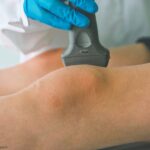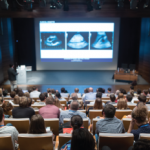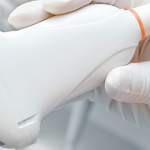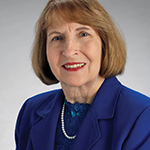 Have you ever felt so stupid, and yet so happy to be stupid, at the same time? That was me at the USSONAR Multi-Track Conference earlier this year. Long-time readers may know that I have a particular affinity for ultrasound and, through hard work and diligent practice, I believed that I excelled at it. However, sitting in the audience, I felt incredibly humbled. Even with all the hours of learning, scanning and teaching over the years, I was nothing compared to the true masters of ultrasound, the people who scrutinize and find value in every pixel on the screen.
Have you ever felt so stupid, and yet so happy to be stupid, at the same time? That was me at the USSONAR Multi-Track Conference earlier this year. Long-time readers may know that I have a particular affinity for ultrasound and, through hard work and diligent practice, I believed that I excelled at it. However, sitting in the audience, I felt incredibly humbled. Even with all the hours of learning, scanning and teaching over the years, I was nothing compared to the true masters of ultrasound, the people who scrutinize and find value in every pixel on the screen.
Strangely enough, that feeling of inadequacy wasn’t discouraging. On the contrary, it was energizing and highly motivating. To be surrounded by individuals who had pushed themselves to become masters, to listen to their wise words and to learn from them felt like an immense privilege. As I was returning home with a head chock-full of new information and imagination for what could be done with ultrasound, I was struck by a more concrete thought. Mastery is not merely an end point; it is an evolving set of relationships between knowledge, curiosity and humility.
This experience prompted even deeper reflection. What does it take to become a master in rheumatology? How do we cultivate the habits and mindset to strive for excellence? And most vexingly, can we become masters without losing that sense of balance? Let’s rheuminate!
The Art of Revelation
It may sound reductive, but fundamentally sonography is an art of revelation. Not only does ultrasound reveal the subtle features of anatomy that ordinarily cannot be visualized, it also reveals something about the character of the sonographer. After all, the output of a sonographic evaluation is nothing but a grainy, usually monotone and usually incomprehensible picture on a screen.
The value in ultrasonography is only revealed once the enormity of the clinician’s prior experience is put on display. After all, ultrasound is not merely the art of obtaining a technically adequate picture on a screen. It’s about condensing that complexity of information into actionable clinical information. Additionally, in the context of rheumatology, it is about integrating other sources of information, such as the history, the physical examination, laboratory findings and other radiographic data.
In this way, revelation has both visible and invisible dimensions. Outwardly, we see pathology, like an effusion, an erosion or tenosynovitis. That’s the aha moment, when something comes into view and our pupils suddenly snap to attention at a detail. Less evidently, we can catch a glimpse of the clinician’s precision, patience and perspective in the background observations of intense muscle memory and dexterity with a probe, fast fingers adjusting knobs and judicious use of dynamic procedures. When you appreciate both these external and internal dimensions, you start to recognize that the image on screen becomes a mirror to the clinician-patient interaction.



